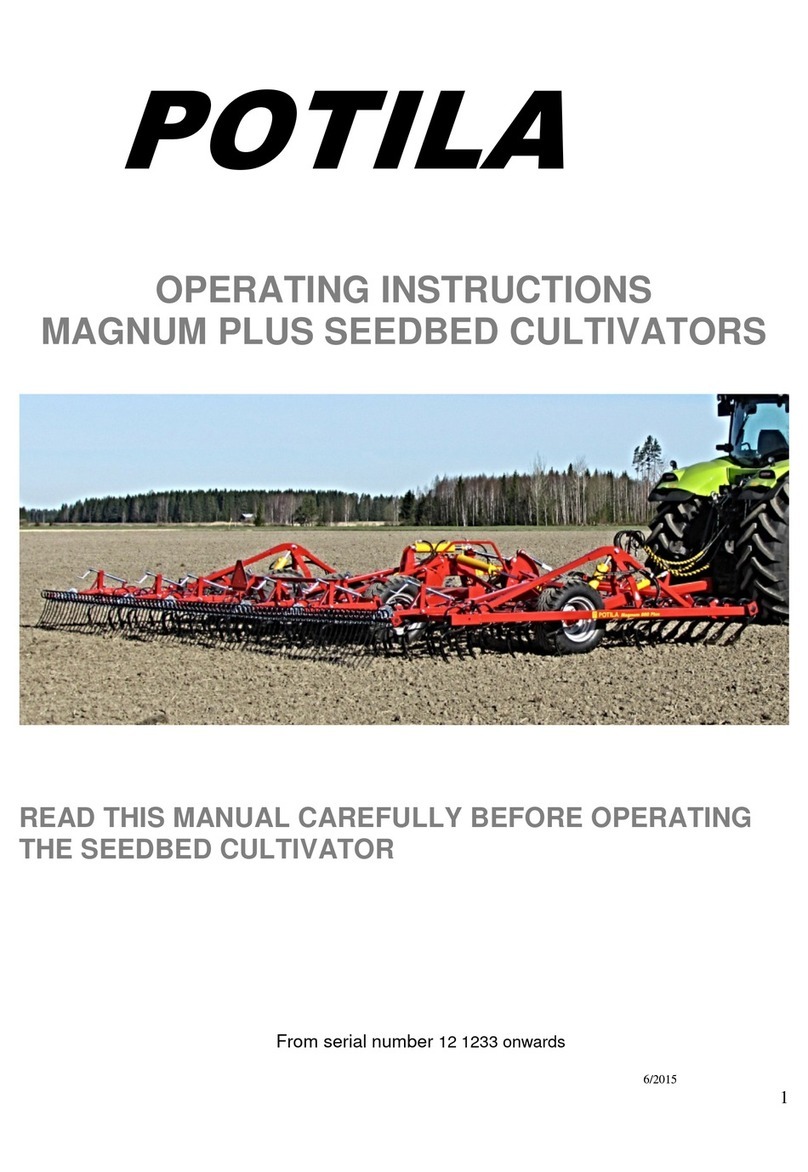
5
Technical specifications
Type MASTER 500 600 700 800
Number of sections 3333
Working width, m 5.0 6.0 7.0 8.0
Number of tines 62 74 86 99
Number of tine axles 8 8 8 8
Draught requirement, kW 66 80 100 130
hp 90 110 140 180
Number of required hydraulic
outlets single-/double-acting -/3 -/3 -/3 -/3
Transport width, m 2,7 2,7 2,7 2,7
Working depth control
M = mech. H = hydr. HHHH
Number of wheels 6888
Wheel size 250 250 250 250
Weight, incl. following harrow, kg 2530 2850 3325 3450
FEATURES FOUND ON ALL TYPES:
•Tine type 1145, cross-section of material 11 x 45 mm.
•Tine spacing 8 cm.
•Wheels 250/65-14,5”, diameter 685 mm, width 260 mm.
•Lights and reflectors.
•Hydraulically-controlled frontboard as standard.
OPTIONAL EQUIPMENT:
•Following harrow with a tine diameter of 12 mm.
•Spiral rollers, diameter 27 cm.
Rearboard, controlled with frontboard cylinders via linkage bars
or individually by the tractor's hydraulic system, in which case
4 double-acting hydraulic outlets are required.
•The number of rear equipment is limited to a maximum of 2 pieces
of equipment per seedbed cultivator.
•The standard frontboard can be replaced with a 20-cm high full-wide
frontboard constructed of heavy bulb flat steel profile.
•All models can be equipped with a spare wheel.




























